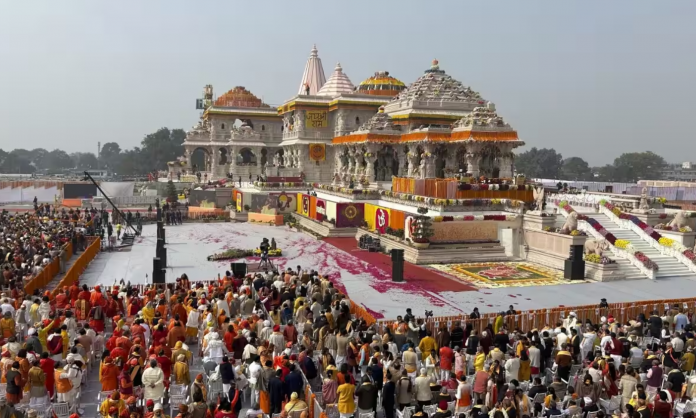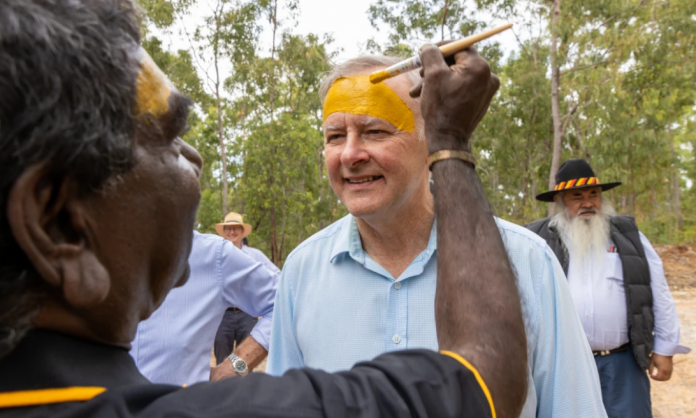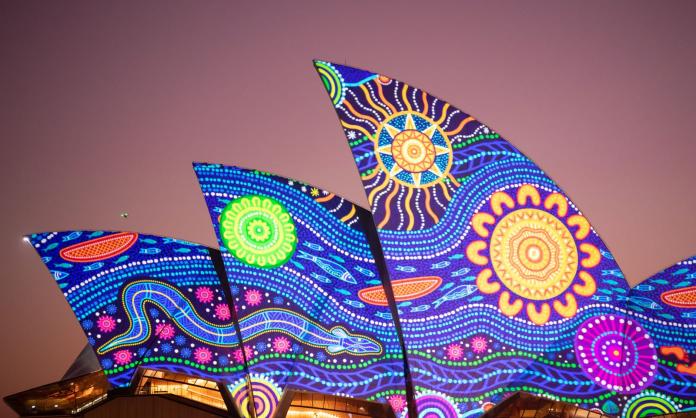As Hollywood celebrates the release of Oppenheimer, protests have focused on the devastating impact of the Trinity atomic test in New Mexico on local Hispanic and indigenous communities. The protests have brought attention to the ongoing struggle of the communities for recognition and compensation, and the film’s whitewashing of racism during the development and testing of the bomb.
The Trinity atomic test, which took place on 16 July 1945 at Los Alamos, was part of the top-secret Manhattan Project, which was established in 1942 to develop and produce an atomic bomb. After German scientists Otto Hahn and Fritz Strassmann discovered neutron-induced nuclear fission in uranium in 1938, the US government under President Franklin Roosevelt formed a Uranium Committee, headed by military and scientific experts, to advance the USA’s atomic research and nuclear capabilities.
In 1941, the country’s atomic research was reorganised, marking the official government shift from research to development. A little under a year later, the Manhattan Project was officially created with an initial $500 million allocated. Three locations across the USA were chosen for the testing of bombs developed by the project: Hanford in Washington, Los Alamos in New Mexico and Oak Ridge in Tennessee. Additional locations were later established in Nevada and Colorado in the 1950s and 1960s.
The selection of the initial sites, in particular Hanford and Los Alamos, had an immediate impact on local Native American communities. While white residents of Hanford and nearby White Bluffs were provided with minimal compensation and 90 days to relocate, no compensation was offered to the Umatilla, Yakama and Nez Perce peoples who refused to abandon their traditional lands.
In a 2003 interview for the Atomic Heritage Museum’s oral history project documenting the Manhattan Project, Russell Jim—a member of the Yakama nation—noted that, although the Hanford area had been used for centuries by his people, it was chosen by the government because it was considered to be “an isolated wasteland, and the people were expendable”. Jim noted that when more than 19,000 documents were released in 1986 about the Manhattan Project, it was revealed that the tests included an intentional release of radioisotopes into the environment. One of these releases had been a “green run”, which Jim explained was “an intentional release to test on the people and the environment”. It had a devastating impact on the Yakama people’s health.
Gabriel Bohnee, a member of the Nez Perce nation, in another interview for the Atomic Heritage Museum, explained the impact of US imperialism on his people and their lands, saying: “The environment was sacrificed in the name of global power”.
In New Mexico, as in Hanford, locals were not warned about the danger before or after the tests, despite 19,000 people living within an 80-kilometre radius of the detonations. Writing for the New York Times in 2020, essayist and author of Acid West Joshua Wheeler highlighted the racism of the US state, saying: “It should come as no surprise that the downwinders [the people who lived downwind of the tests] of Trinity were largely impoverished agricultural families, mostly Hispanic and Native”.
At the time of the test, New Mexico was home to nineteen Native American townships, as well as members of the Apache and Navajo nations.
Despite there being an established and sizeable Indigenous and Hispanic population living off the land, the Trinity testing site had been chosen due to it being not only flat with predictable wind patterns, but also because it was deemed to be “remote”. It originally had been estimated that the nuclear fallout covered an area 400 kilometres long and 320 kilometres wide. However, a new study by Princeton University has found that the fallout from the atomic tests in New Mexico and Nevada moved across 46 US states, as well as Mexico and Canada, within ten days.
Lily Adams from the Union of Concerned Scientists, who joined the protests in support of the New Mexico downwinders, told the Associated Press that the US government “poisoned its own people, many of whom are still waiting for recognition and justice”.
Despite the devastating impact of the Trinity test on their communities, New Mexico downwinders have never been eligible for compensation under the US Radiation Compensation Act. However, according to the Princeton Study, the accumulation of radioactive material in 28 of the 33 counties located within New Mexico and on federally recognised Native American tribal lands far exceeds the required limit set for the federal compensation program. For the New Mexico downwinders, the radiation fallout from the atomic test resulted in a rise in infant mortality, as well as an increase in cancer and decades of health problems.
In an interview with Waging Non-Violence about the release of Oppenheimer, New Mexico downwinder and cancer survivor Tina Cordova said that the film could have done a lot to raise awareness of their struggle. However, filmmakers ignored their request to acknowledge the impact of the bombs.
The racist disregard for indigenous people by imperialist states engaged in the race to develop the most destructive weapon known to humankind was not limited to the USA. In Australia, the British government—with the approval of the Liberal Menzies government—conducted twelve nuclear tests in the 1950 and 1960s. Of these, seven were at Maralinga in South Australia on the traditional lands of the Pitjantjatjara, Yankunytjatjara, Tjarutja and Kokatha peoples. Among the atomic bombs detonated at Maralinga was one twice the size of the one dropped on Hiroshima.
Neither the British nor Australian governments sought permission from the First Nations people, whose land and communities were directly impacted by the atomic tests. Instead, the Australian government attempted forcibly to remove and/or prevent Aboriginal communities from accessing their land. While some warning signs were erected, they were written in English. The failure to warn properly any of the Aboriginal communities about the tests or their fallout resulted not only in Aboriginal people being blinded but also in radiation poisoning among the four peoples, resulting in lifelong radiation-related health problems.
Despite millions of dollars being spent on “cleaning” the area in the 1980 and 1990s, a 2021 study by Monash University found that the ground is still contaminated—and is far worse than previously thought. Speaking with ABC News last year, lead researcher Megan Cook noted that there continued to be “a sustained and prolonged release of plutonium into the ecosystem”.
Imperialist racism was not only part of the develop of the atomic bomb in the USA and Australia. It was also used to justify the mass murder wrought by US imperialism when it dropped two bombs on the Japanese cities of Hiroshima and Nagasaki just three weeks after the successful Trinity test.
In the aftermath of the Japanese bombing of Pearl Harbor in 1941, which resulted in the USA abandoning its isolationist position to enter World War II, anti-Japanese racism became central to the US imperialism and it war efforts. Anti-Japanese racism was widely popularised within US media. US government policy also worked to further anti-Japanese racism by interning more than 120,000 Japanese Americans and migrants in concentration camps.
Opinion polls in December 1944 revealed that 13 percent of the US public and 50 percent of US military personnel were in favour of exterminating all Japanese people. Polls conducted in the immediate aftermath of the bombing of Hiroshima and Nagasaki, which resulted in the murder of more than 210,000 Japanese civilians, indicated 85 percent public approval for the mass murder of Japanese civilians. Polls conducted two months after the bombings revealed that more than one-fifth of the US population thought more bombs should have been dropped.










